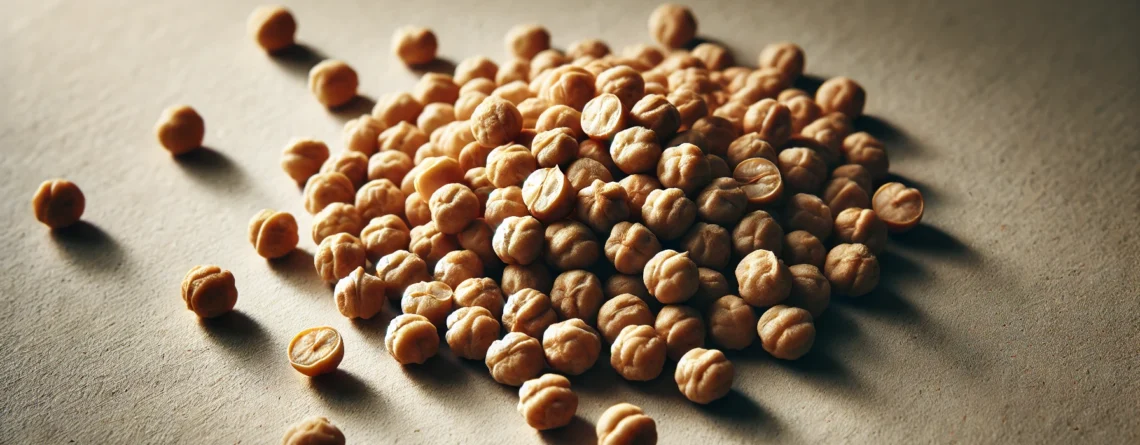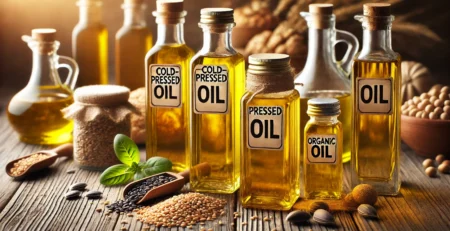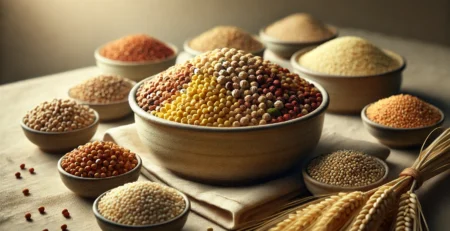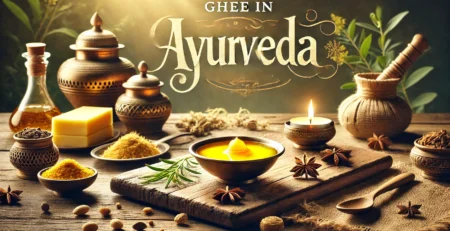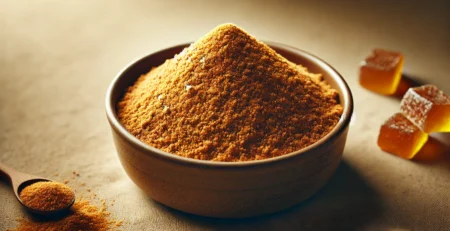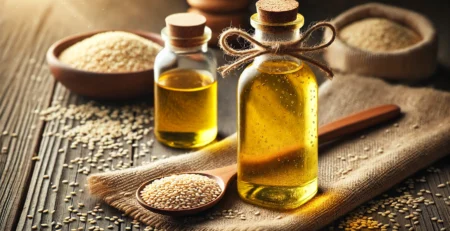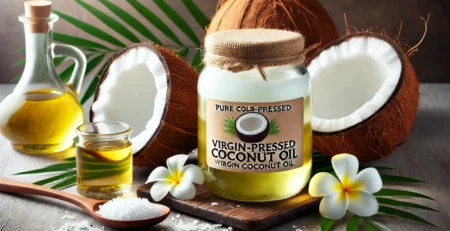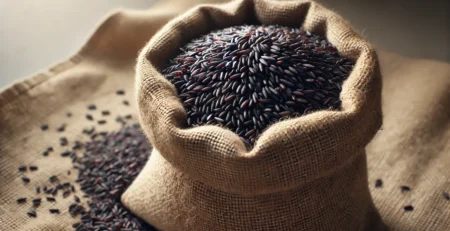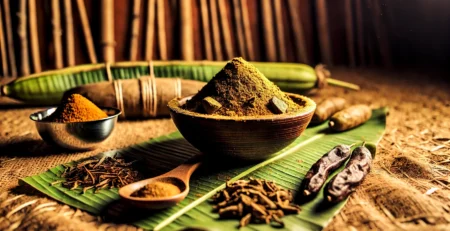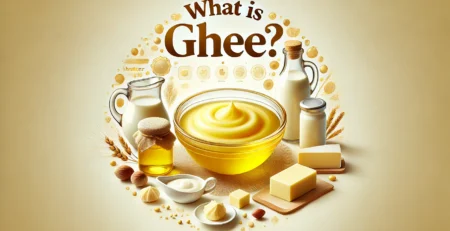Pottukadalai in English: Nutritional Benefits, Uses, and Buying Guide
Pottukadalai in English and Pottu Kadalai in English refer to roasted gram or roasted chana dal. This legume is a staple in many Indian households and is known for its rich nutritional profile and versatile use in various dishes. Whether you call it “pottu kadalai” or “pottukadalai,” this ingredient is an excellent source of protein, fiber, and essential nutrients. This article will delve deep into its benefits, uses, and how it plays a crucial role in a healthy diet.
Table of Contents
- Introduction to Pottu Kadalai/Pottukadalai in English
- Nutritional Profile
- Health Benefits of Pottu Kadalai/Pottukadalai in English
- Culinary Uses
- Pottu Kadalai/Pottukadalai in Different Cultures
- How to Incorporate Pottu Kadalai/Pottukadalai into Your Diet
- Comparisons with Other Legumes
- Where to Buy Pottu Kadalai/Pottukadalai in English
- Frequently Asked Questions (FAQs)
- Conclusion
1. Introduction to Pottukadalai in English
Pottu kadalai in English translates to roasted gram, a type of legume that has been roasted to enhance its flavor and shelf life. Pottu kadalai, or pottukadalai, is a popular snack in India and is also used as an ingredient in various traditional dishes. The process of roasting not only enhances the taste but also makes the legume easier to digest.
In South India, pottu kadalai is a common ingredient in recipes such as chutneys, powders, and sweets. It’s particularly favored for its nutty flavor and crunchy texture, which adds depth to both savory and sweet dishes.
2. Nutritional Profile
Pottu kadalai in English, or roasted gram, is a powerhouse of nutrients. It is low in calories but rich in essential nutrients, making it a perfect addition to a balanced diet. Here’s a closer look at its nutritional profile:
2.1 Protein
Roasted gram is an excellent source of plant-based protein, making it ideal for vegetarians and vegans. Protein is essential for muscle repair, immune function, and overall body maintenance.
2.2 Fiber
Pottu kadalai is high in dietary fiber, which aids in digestion, helps regulate blood sugar levels, and promotes a feeling of fullness, thereby aiding in weight management.
2.3 Vitamins and Minerals
- Iron: Important for preventing anemia and maintaining healthy blood.
- Magnesium: Supports muscle and nerve function, as well as bone health.
- Potassium: Helps regulate fluid balance, muscle contractions, and nerve signals.
- B Vitamins: Essential for energy production and brain health.
2.4 Low Glycemic Index
Pottukadalai has a low glycemic index, meaning it releases sugar slowly into the bloodstream, making it suitable for people with diabetes.
3. Health Benefits of Pottukadalai
3.1 Supports Heart Health
The high fiber content in pottu kadalai helps lower cholesterol levels, reducing the risk of heart disease. Additionally, the magnesium and potassium found in pottukadalai contribute to maintaining healthy blood pressure levels.
3.2 Aids in Weight Management
The combination of protein and fiber in pottu kadalai promotes satiety, helping to control appetite and reduce overall calorie intake. This makes it a great snack for those looking to manage their weight.
3.3 Improves Digestive Health
Pottukadalai is rich in dietary fiber, which aids in digestion by adding bulk to the stool and preventing constipation. Regular consumption of pottu kadalai can promote a healthy digestive system.
3.4 Regulates Blood Sugar Levels
Due to its low glycemic index, pottukadalai is beneficial for individuals with diabetes. It helps maintain stable blood sugar levels and reduces the risk of sudden spikes.
3.5 Boosts Energy Levels
The B vitamins in pottu kadalai play a crucial role in energy production, helping to convert food into energy efficiently.
3.6 Enhances Bone Health
The magnesium and calcium found in pottu kadalai contribute to stronger bones and help prevent conditions like osteoporosis.
3.7 Supports Muscle Repair
Thanks to its high protein content, pottu kadalai is beneficial for muscle repair and recovery, making it an excellent post-workout snack.
4. Culinary Uses
Pottu kadalai in English, or roasted gram, is incredibly versatile in the kitchen. It can be used in a variety of dishes, ranging from savory to sweet. Here are some common culinary uses:
4.1 Chutneys
Pottu kadalai is a key ingredient in many South Indian chutneys, providing a thick, creamy texture and a nutty flavor. It pairs well with coconut, tomatoes, and herbs.
4.2 Powders and Flour
Roasted gram is often ground into a fine powder and used in spice mixes or as a base for various Indian dishes. It is also mixed with other ingredients to make healthy, protein-rich flours.
4.3 Sweets and Snacks
Pottukadalai is used in the preparation of traditional sweets such as ladoos, where it is combined with jaggery and ghee. It is also consumed as a simple roasted snack, sometimes seasoned with salt and spices.
4.4 Breakfast Dishes
In South India, pottu kadalai is sometimes added to breakfast dishes like upma and dosa batter for added nutrition and flavor.
4.5 Thickening Agent
Due to its high protein content, pottukadalai flour is also used as a thickening agent in soups and curries, giving them a rich, creamy texture.
5. Pottukadalai in Different Cultures
While pottu kadalai is most commonly used in South Indian cuisine, it has also found its way into other regional dishes and international cuisines. Here’s how pottukadalai is enjoyed in different cultures:
5.1 India
In India, pottu kadalai is a staple in both rural and urban households. It is consumed as a snack, used in various traditional dishes, and even given as a healthy snack for children.
5.2 Southeast Asia
In parts of Southeast Asia, roasted gram is used in snacks and street food, often seasoned with local spices to create unique flavor profiles.
5.3 Middle Eastern Cuisine
Roasted gram is occasionally found in Middle Eastern cuisine, where it is used in salads or as a protein-rich addition to vegetarian dishes.
5.4 Western Cuisine
In the West, pottu kadalai is gaining popularity as a healthy, gluten-free alternative to traditional grains and flours. It is often used in health food recipes and as a protein supplement.
6. How to Incorporate Pottu Kadalai/Pottukadalai into Your Diet
Incorporating pottu kadalai into your diet is simple, given its versatility and nutritional benefits. Here are some tips on how to include this superfood in your daily meals:
6.1 As a Snack
Keep a jar of roasted gram handy for a quick, healthy snack. You can enjoy it plain, or toss it with some spices and a bit of oil for added flavor.
6.2 In Breakfast
Add a handful of pottukadalai to your morning smoothie or oatmeal for an extra boost of protein and fiber. You can also mix it into pancake or waffle batter for a nutritious twist.
6.3 In Cooking
Use pottu kadalai flour to thicken soups, curries, or stews. It can also be used as a binding agent in veggie burgers or meatballs.
6.4 In Baking
Pottukadalai flour can be used in baking recipes, either as a partial replacement for regular flour or in gluten-free recipes. It adds a subtle nutty flavor and a protein boost to cookies, muffins, and breads.
6.5 In Desserts
Try making traditional Indian sweets like ladoos with pottu kadalai, or use it to add a crunchy texture to yogurt parfaits or ice cream.
7. Comparisons with Other Legumes
Pottu kadalai is just one of many legumes available, each with its unique nutritional benefits. Here’s how it compares to other popular legumes:
7.1 Chickpeas
Chickpeas and pottu kadalai are similar in many ways, both being high in protein and fiber. However, pottu kadalai is lower in calories and has a slightly different flavor profile, making it a better option for those watching their calorie intake.
7.2 Lentils
Lentils are another great source of plant-based protein, but they differ in texture and cooking methods compared to pottukadalai. While lentils are often used in soups and stews, pottu kadalai is more versatile as a snack or ingredient in various dishes.
7.3 Peas
Like pottu kadalai, peas are high in protein and fiber. However, roasted gram has a more robust, nutty flavor and is often preferred in dishes where a stronger taste is desired.
7.4 Black Beans
Black beans are rich in antioxidants and fiber, but pottu kadalai offers a different texture and flavor that pairs well with Indian spices and dishes.
8. Where to Buy Pottu Kadalai (Pottukadalai in English)
8.1 Local Grocery Stores
Pottu kadalai in English, or roasted gram, is commonly available in most local Indian grocery stores. These stores typically stock a variety of legumes and pulses, including pottukadalai, as it is a staple in many Indian households. Shopping locally allows you to inspect the product for freshness and quality before purchasing.
8.2 Organic and Specialty Stores
For those looking for organic options, specialty stores that focus on natural and organic foods are a great place to find pottu kadalai. Organic versions of pottukadalai are often free from pesticides and processed in a way that retains their nutritional value. These stores may also offer roasted gram in bulk, allowing you to buy the exact quantity you need.
8.3 Online Retailers
With the increasing demand for traditional and healthy ingredients, pottu kadalai is now widely available from online retailers. Websites specializing in Indian groceries or health foods often carry roasted gram in various quantities and packaging options. Purchasing online provides the convenience of home delivery and access to a wider range of brands and varieties. However, it’s important to choose reputable online stores and read customer reviews to ensure you’re getting a high-quality product.
8.4 Farmer’s Markets
Farmer’s markets can be another excellent place to purchase pottu kadalai, especially if you’re looking for locally grown or freshly roasted options. Buying directly from farmers can often ensure that the product is fresh and of high quality. Additionally, farmer’s markets may offer roasted gram that has been produced using traditional methods, which can enhance its flavor and nutritional profile.
8.5 Tips for Buying Quality Pottu Kadalai/Pottukadalai
When buying pottu kadalai, whether in-store or online, here are some tips to ensure you get the best quality:
- Check the Packaging: Ensure that the roasted gram is well-sealed to maintain its freshness. Airtight packaging is crucial for preventing moisture from getting in, which can cause the gram to lose its crispness.
- Look for Organic Labels: If you prefer organic products, look for pottu kadalai that is certified organic. This ensures that the gram is free from synthetic pesticides and chemicals.
- Inspect the Color and Texture: Fresh pottu kadalai should have a consistent light brown color and a crisp texture. Avoid any packages that contain discolored or broken pieces.
- Consider the Shelf Life: Roasted gram has a long shelf life if stored properly. However, it’s best to check the expiration date and opt for a product with the longest possible shelf life to ensure freshness.
- Read Reviews: If buying online, take the time to read customer reviews. This can give you insights into the quality of the product and the reliability of the seller.
By following these tips, you can ensure that you’re purchasing high-quality pottu kadalai that will provide maximum nutritional benefits and enhance your culinary creations.
9. Frequently Asked Questions (FAQs)
9.1 What is Pottukadalai in English?
Pottu kadalai in English is known as roasted gram or roasted chana dal. It is a popular legume used in various Indian dishes for its nutty flavor and crunchy texture.
9.2 Is Pottu Kadalai Healthy?
Yes, pottu kadalai is very healthy. It is rich in protein, dietary fiber, and essential nutrients like iron, magnesium, and zinc. It supports heart health, aids digestion, regulates blood sugar levels, and promotes weight management.
9.3 Can Diabetics Eat Pottu Kadalai?
Absolutely! Pottu kadalai has a low glycemic inpdex, meaning it releases sugar slowly into the bloodstream, making it suitable for people with diabetes.
9.4 How Can I Use Pottukadalai in Cooking?
Pottu kadalai is versatile and can be used in a variety of dishes. It is commonly used in chutneys, sweets like ladoos, and as a thickening agent in soups and curries. It can also be eaten as a healthy snack.
9.5 Where Can I Buy Pottu Kadalai?
You can buy pottu kadalai from local Indian grocery stores, organic and specialty food stores, online retailers, and even at farmer’s markets. Look for high-quality, well-packaged products to ensure freshness and nutritional value.
10. Conclusion
Pottu kadalai in English, also referred to as pottukadalai, is more than just a culinary staple; it is a nutritional powerhouse that offers a range of health benefits. From supporting heart health and digestion to aiding in weight management and regulating blood sugar levels, this versatile legume is a valuable addition to any diet. Whether you’re using it in traditional Indian recipes or incorporating it into modern dishes, pottukadalai is sure to enhance both the flavor and nutritional value of your meals. With its rich nutrient profile and wide range of uses, adding pottu kadalai to your diet is a simple yet effective way to enjoy better health and wellness.


